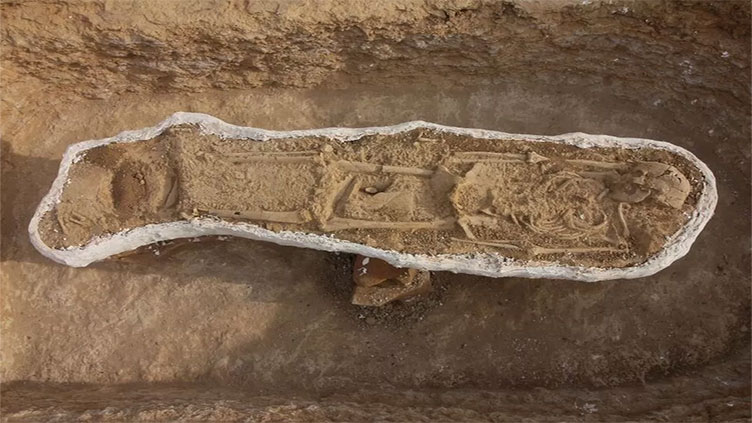The mysteries of a mass graveyard of early Indians

Technology
Scientists say burial ground may be the largest "pre-urban" cemetery of society discovered so far
(Web Desk) - Scientists have unveiled a sprawling burial site in India belonging to one of the world's earliest urban civilisations.
In 2019, as scientists embarked on excavating a mound of sandy soil near a remote village in the sparsely populated Kutch region, situated not far from Pakistan in India's western state of Gujarat, they had no inkling of the surprise that lay in store for them.
"When we began digging, we thought it was an ancient settlement. Within a week, we realised it was a cemetery," says Rajesh SV, an archaeologist with the University of Kerala, who led the search.
Three excavation seasons - involving more than 150 Indian and international scientists - were conducted at the 40-acre site. Researchers now estimate the presence of at least 500 graves of the Indus society, one of the world's earliest urban civilisations.
Also known as the Harappan civilisation, named after its first city, this society - which included austere farmers and traders who lived in walled, baked-brick cities - rose to prominence some 5,300 years ago in what is now north-west India and Pakistan.
In a century since the civilisation's initial discovery, researchers have unearthed up to 2,000 sites in India and Pakistan.
Scientists reckon the sprawling burial ground near Khatiya village in Gujarat may potentially be the largest "pre-urban" cemetery of the society discovered so far.
They believe it was in use for about 500 years, spanning from 3200BC to 2600BC, making the oldest graves here around 4,600 years old.
Excavations so far have yielded a single intact male human skeleton, as well as partly preserved skeletal remains including skull fragments, bones and teeth.
They have also found an array of burial artefacts - more than 100 bangles and 27 beads made of shell. Ceramic vessels, bowls, dishes, pots, small pitchers, beakers, clay pots, water cups, bottles and jars have also been discovered. Minor treasures include beads made of the semi-precious stone, lapis lazuli.
The graves have unique features, including sandstone-lined burial shafts that point in different directions. Some are oval shaped; others rectangular.
There are smaller graves where children were buried. The bodies appear to be laid supine, but most bones have dissolved because of the acidic soil.
"This is a hugely significant find," says Brad Chase, a professor of anthropology at Albion College, Michigan.
"Several pre-urban cemeteries have been discovered in Gujarat, but this is by far the largest - and therefore has the potential to reveal a greater diversity of grave types that will help archaeologists to more fully understand pre-urban society in the region as well as provide crucial context for the other smaller cemeteries that have been previously discovered," says Prof Chase.
Earlier excavations of Indus sites in the Punjab region of today's Pakistan offer some clues about the burial practices of the Indus people.

